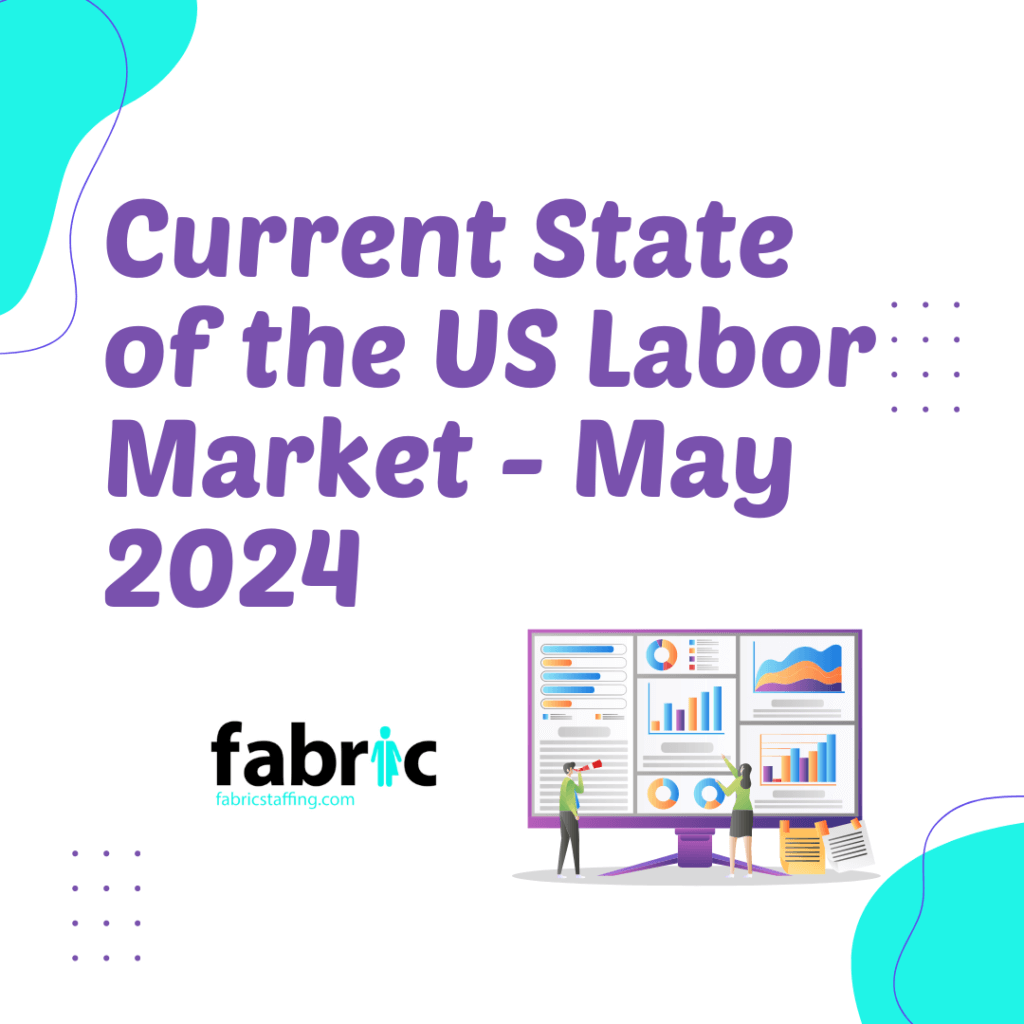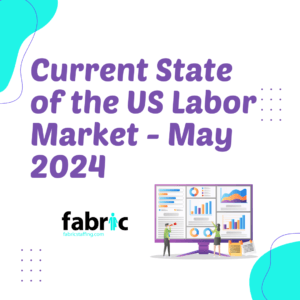Current State of the US Labor Market: Insights from Recent Data, May 2024
Recent data paints a nuanced picture of both resilience and challenges surrounding the current state of the U.S. labor market.
By analyzing recent insights from the latest labor market reports, it becomes evident that understanding these dynamics is paramount for informed decision-making. Here, we aim to unravel the complexities of the current US labor market, shedding light on key insights and strategies to navigate its ever-changing currents.
Decline in Job Openings and Hiring Rates
According to the latest figures from the Labor Department’s Job Openings and Labor Turnover Survey, job openings in the U.S. fell to their lowest level in three years during March.
The decline was notable, with available openings dropping to 8.49 million from a revised 8.81 million in February. Concurrently, the rate at which Americans voluntarily left their jobs also decreased to a 4-year low.
Hiring rate across all industries slowed to 3.5%, marking the slowest pace since the onset of the pandemic in 2020. These indicators collectively suggest a softening of the labor market, a trend that aligns with the Federal Reserve’s efforts to manage inflationary pressures by maintaining high interest rates.
Robust Job Growth in March vs. Moderation in April
Despite the recent decline in job openings, March saw a significant uptick in job creation, with the U.S. economy adding 303,000 jobs. This figure surpassed economists’ expectations, signaling projections for continued strength in the labor market. Notably, the unemployment rate edged down to 3.8% from the previous month.
However, April’s recent data presents a more nuanced narrative.
While the U.S. companies added 192,000 jobs, according to the ADP report, there was a slight moderation compared to March. However, this figure still indicates robust demand for workers across multiple industries, with leisure and hospitality, construction, and trade sectors leading payroll growth.
Wage Growth Dynamics
Recent wage growth trends also warrant attention. The average hourly wage growth remained steady in April, rising by 0.3% and 4.1% from a year ago. However, a separate report from ADP highlighted a cooling in wage growth for job changers, which slowed to 9.3% from a year ago.
This moderation in wage growth for job changers, coupled with steady growth for those staying in their jobs, reflects a complex interplay of factors influencing labor market dynamics.
Despite persistent wage pressures, the Federal Reserve has maintained a cautious stance on adjusting interest rates, awaiting clearer signals of inflationary trends.
While the overall trajectory of wage growth and inflation presents a multifaceted picture, regional policies are also beginning to exert notable influence on these dynamics. California’s recent implementation of a fast-food wage law, mandating a minimum wage of $20 for workers in the industry, has reverberated beyond state borders.
Initially projected to affect around 500,000 workers, the law’s broader implications now extend to potentially impacting as many as 5 million individuals, according to estimates by Bloomberg Economics. This expansion of affected workers could significantly heighten inflationary pressures as businesses seek to offset increased payroll costs by raising prices.
The ripple effects of such policies are already being felt in everyday consumer experiences, with notable increases in prices observed across various sectors. For instance, the average price of chicken burritos or bowls at Chipotle Mexican Grill restaurants in California surged from $9.50 to $10.27 within a short time frame, reflecting a 2% price hike.
Similarly, Burger King witnessed a 2% price increase, while Wendy’s experienced an 8% jump. Beyond fast food, even school cafeteria workers in Sacramento are set to receive a wage increase to $20 an hour, a move directly influenced by the new legislation.
These examples underscore the interconnectedness of regional wage policies with broader economic trends, highlighting the intricate dance between wage growth, inflation, and regulatory interventions in shaping the trajectory of the US labor market.
Implications and Outlook
The convergence of recent labor market trends carries profound implications for stakeholders across all sectors. The decline in job openings to a three-year low, coupled with a slowdown in voluntary job departures, signals a potential softening of the labor market; reflective of broader economic dynamics influenced by the Federal Reserve’s efforts to manage inflation. Despite this, March’s exceptional job growth, surpassing expectations with the addition of 303,000 jobs, underscores am underlying resilience of the US economy.
However, the juxtaposition of robust job growth against fluctuations in wage dynamics and inflationary pressures presents a complex narrative. The impact of California’s fast-food wage law, mandating a minimum $20 wage for workers, exemplifies the interconnectedness of regional policies with broader economic trends. Estimates suggesting potential inflationary pressures and consequential effects on monetary policy deliberations by the Federal Reserve underscore the far-reaching implications of localized interventions.
Furthermore, observed increases in consumer prices across various sectors, exemplified by price hikes at Chipotle Mexican Grill, Burger King, and Wendy’s, highlight the tangible effects of wage policies on everyday experiences. Even in sectors beyond fast food, such as school cafeterias in Sacramento, wage increases are being driven by regulatory changes, illustrating the ripple effects of regional policies on broader labor market dynamics.
Looking ahead, stakeholders must navigate these intricate dynamics with vigilance and strategic foresight. While challenges persist, opportunities for informed decision-making abound. By leveraging insights gleaned from comprehensive analyses of labor market data, policymakers, businesses, and individuals can chart pathways toward economic stability and prosperity.











